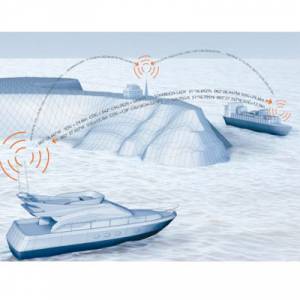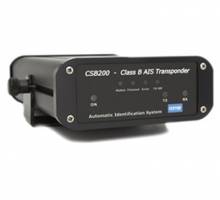
AIS – Features, Benefits and Free Local Feed (Part II)
Part I of this article was a general introduction to AIS and the free AIS website. In this article we’ll examine how AIS works and the benefits of AIS to seafarers.
How AIS works
The Automatic Identification System was developed to allow ships and coastal stations to accurately locate and identify one another. An AIS transceiver uses VHF radio and GPS technology to communicate with other nearby ships.
An AIS transponder determines its own position, speed and course using a built in GPS receiver. This information is combined with other important navigation information and automatically communicated between AIS equipped vessels without any user interaction.
AIS transponders on other vessels and coast stations receive this information and use it to build up a live graphical display of traffic in the area. The transponder can be connected to many types of chart plotter or PC charting software to give a RADAR type display of vessel positions. AIS does not require a radar, but can offer similar capabilities and even enhance a radar image if a radar has already been fitted to the vessel.
The range or coverage of the system is similar to a VHF radios. The system also has the advantage that VHF radio signals will travel around bends and over islands giving better coverage than RADAR or enhancing a RADAR picture when used together.
Benefits of AIS
• “See and be seen”.
A Class B transponder continuously receives information form all Class A and Class B equipped vessels around you and displays this information on your standard chart plotter or PC. At the same time your Class B will transmit your position to all AIS equipped vessels automatically.
• Safety at night and in poor weather conditions
The class B AIS is a vital navigation tool in poor visibility conditions. The information received from other AIS ‘targets’ provides the user with vital navigation information and the position transmission alerts other vessels to the users location.
• Combined with radar, AIS gives you the best possible picture of your situation in all conditions
• Safety in high traffic / commercial shipping areas
• Position transmission to authorities / nearby vessels in case of emergency
• Best possible picture of a dynamic environment (moving vessels)
• Graphically view your position in relation to other vessels when connected to suitable display
• Ability to ‘see around the corner’
• Track vessels of interest such as friends/ colleagues “See and be seen”.
Typical Installations Onboard
There are many AIS transponders or indeed other navigation or radio systems equipped with built in AIS units available on the market suitable for installation on leisure, recreational or small commercial vessels. Comar Systems provide a range of AIS hardware and are available from all good chandlers and marine electronics dealers.
Interested in your own AIS site?
TerraMar Networks would be pleased to hear from anyone interested in installing an AIS receiver ashore. In general terms sites need a good uncluttered view to sea without interference and where the antenna can be sited as high as possible. A 1m omni directional antenna is usually sufficient. The receiver requires power and an always on (Broadband) connection.
To access the free AIS feed provided by Boatshed Dartmouth from Start Point click here.
The area covered by the free receiver extends from Start Point to Weymouth, South to Cherbourg and West to Plymouth (the exact service area will vary according to climatic conditions.
About TerraMar Networks
TerraMar Networks are providers of asset tracking solutions for land, sea and air. The tracking platform ‘tracpoint’ is communications agnostic – this allows it to support almost any communications network including GPRS (mobile phone), satellite (Inmarsat / ISatM2M), Low Earth Orbit satellite (Iridium/Globalstar) or AIS. Thousands of assets are tracked worldwide by TerraMar Networks including some of the largest names in merchant shipping. For further information contact us here or email paul.singer@terramarnetworks.com
Please note that the service is provided on a non-commercial free basis and should not be relied on for navigational or other mandatory purpose
Thinking of Selling Your Boat?
Boatshed Dartmouth can help you prepare your boat for sale and can have it on the market within days available to Boatshed’s own database of over 400,000 registered users. And now the photographs are 4 times the size and as always we sell boats on a ‘No Sale, No Fee’ basis.
Click here to contact Paul about selling your boat
Click here to speak to Paul Singer, Boatshed Dartmouth
Keep up to date with news and new listings - Follow Boatshed Dartmouth on Twitter
Follow us on Blogger




